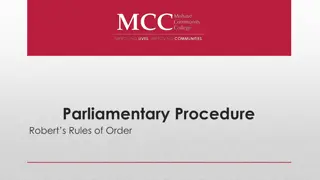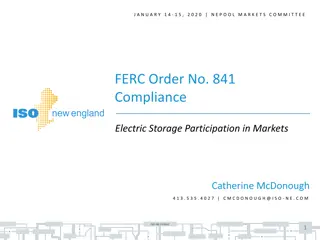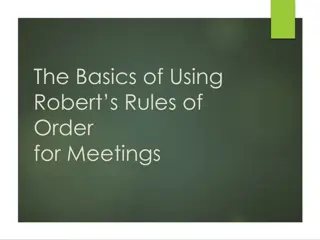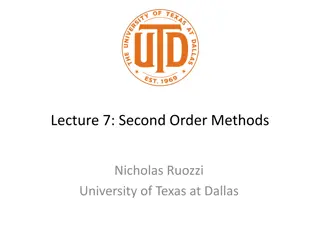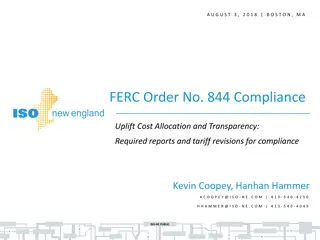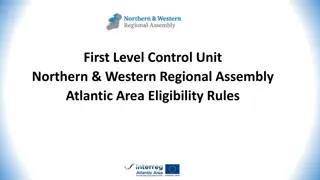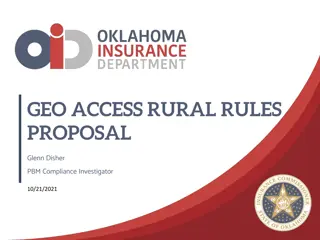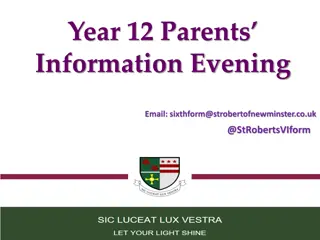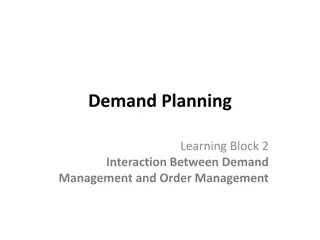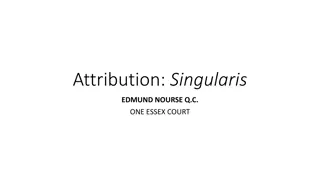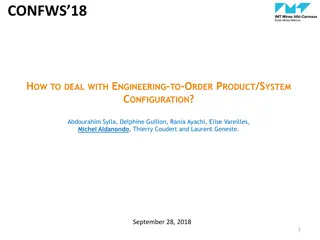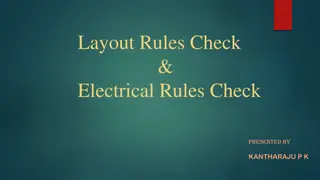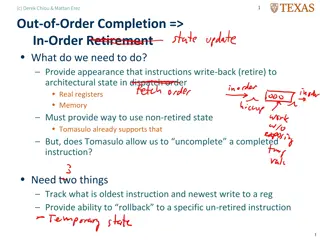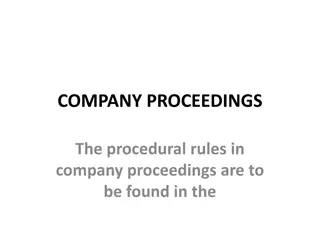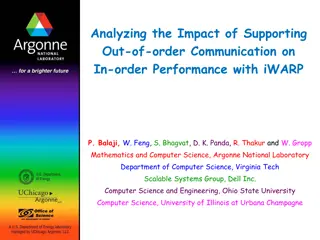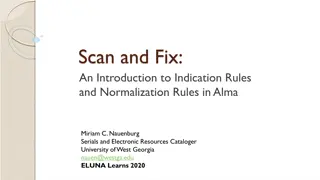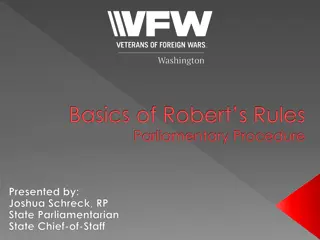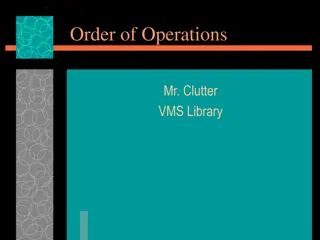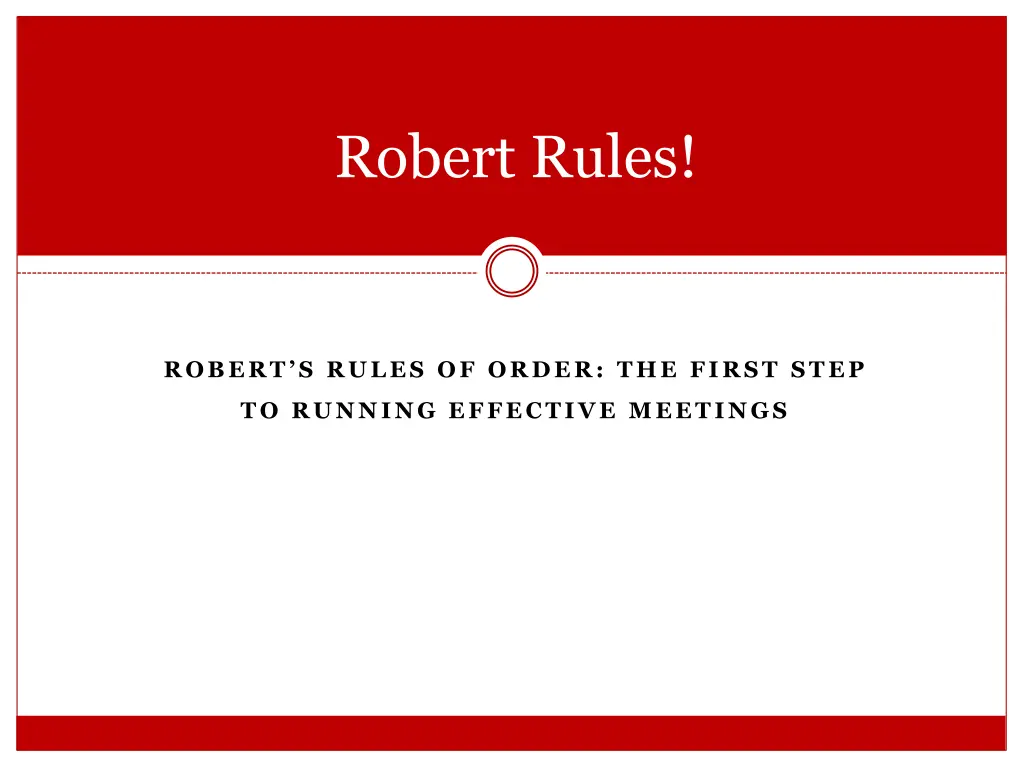
Effective Meeting Management with Robert's Rules of Order
Learn the principles of Robert's Rules of Order to run efficient meetings. Understand essential motions like making a motion, seconding, discussing, and voting. Discover tips for presiding officers and additional motions to manage meetings effectively.
Download Presentation

Please find below an Image/Link to download the presentation.
The content on the website is provided AS IS for your information and personal use only. It may not be sold, licensed, or shared on other websites without obtaining consent from the author. If you encounter any issues during the download, it is possible that the publisher has removed the file from their server.
You are allowed to download the files provided on this website for personal or commercial use, subject to the condition that they are used lawfully. All files are the property of their respective owners.
The content on the website is provided AS IS for your information and personal use only. It may not be sold, licensed, or shared on other websites without obtaining consent from the author.
E N D
Presentation Transcript
Robert Rules! ROBERT S RULES OF ORDER: THE FIRST STEP TO RUNNING EFFECTIVE MEETINGS
Principles Purpose is to facilitate the transaction of business Members speak in turns after being acknowledged by the chair A member may speak twice to the same issue after other members wishing to speak has spoken to it once All members have the right of free and fair debate The agenda and committee reports are merely recommendations; when presented to the assembly and a motion stated, debate begins and changes occur The majority has the right to decide
Notes for the Presiding Officer Train your board or committee members using consistent practices (set a routine) Start meetings on time End meetings on time or early Meetings are for conducting business Encourage members to use time before and after the meeting engage in social conversations Involve your board or committee in development of the agenda and materials in advance of meetings
Essential Motions Call the Meeting to Order Make a Motion 1. 2. Second the Motion 3. Discussion (must have a second for discussion otherwise no discussion may take place, chair s discretion to limit discussion) 4. Call for a Vote Motion to Adjourn
More Motions Table to Definite Date Use when it becomes apparent more information is needed before taking action Limit Debate For contentious issues where everyone has many things to say, use this motion to limit debate and establish an end-time for discussion or time constraints on comments Withdraw/Modify Motion Use when to withdraw or modify the motion previously made which has not yet been voted on Point of Order Any board member may call to the attention of the chair Robert s Rules are not being followed (example members are speaking over one another, a motion was not voted on)


